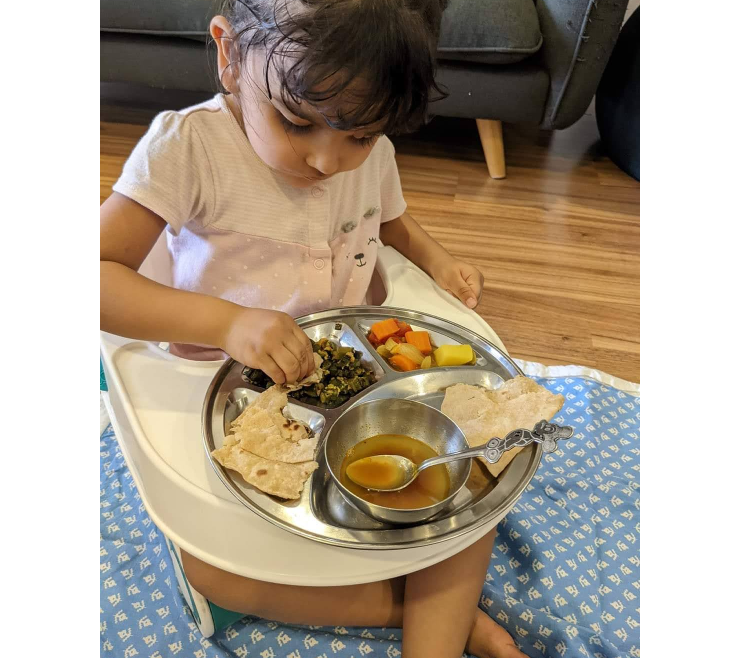Struggles during mealtimes is a common scene for Parents with fussy toddlers. Fussy eating is a common concern for parents around the world, with many worrying that an uncooperative child at mealtime could lead to their child not getting the diverse source of nutrients they need.
Young children’s tastes and food preferences change from day to day – it can be hard to keep up! Here are our top tips for dealing with a fussy eater at home.
Try again and again and again…
Did you know that a toddler may need to try a new food more than 10 times before they decide they like it? If your child is refusing to eat certain foods, there is no need to worry. In fact, this is very common.
Gradually introduce new foods and keep coming back to ones that didn’t work well. Another strategy is to mix a small amount of the food your toddler doesn’t like with something they enjoy. Young children’s tastes change constantly. Something they don’t find appealing now they may love in a month. Introduce Gradually: Start with small portions of new foods and blend them with familiar ones. This makes the new items less intimidating and easier to accept.
1.Involve Them in Cooking and Meal Planning: Let them help with meal preparation. When picky eaters are part of the process, they may be more willing to try the results. Let picky eaters help choose or plan meals. This involvement can increase their interest and willingness to try new dishes.
2.Experiment with Cooking Methods: Different cooking methods can change the flavour and texture of foods. Roasting, grilling, or steaming might make a vegetable more appealing than boiling.
3.Use Dips and Sauces: Sometimes, adding a favourite dip or sauce can make new foods more appealing. For example, try offering vegetables with a tasty dip or a new dish with a favourite sauce.
4.Make Food Fun: Present food in creative and appealing ways. For example, Use colorful vegetables, create smiley faces with fruits and veggies, interesting shapes, or fun names to make the meal more enticing
5.Focus on Flavors and Textures They Like: Find out what flavors and textures they enjoy and try to replicate those with new ingredients. Gradually introduce new tastes in a familiar context.
6.Hide Nutrients in Favorite Foods: If possible, sneak healthy ingredients into dishes they already like. For example, blend spinach into a fruit smoothie or add finely chopped vegetables to a pasta sauce. This way, they get the benefits of new foods without even realizing it.
7.Create a Comfortable Eating Environment: Ensure that mealtime is relaxed and positive. Avoid making it a battleground, and try to be a good role model by eating a variety of foods yourself.
8.Be Persistent but Patient: It often takes multiple exposures to a new food before a picky eater accepts it. Keep offering it without pressure and celebrate small successes. Consistency and patience are key to gradually expanding their palate.
9.Offer Choices: Give them some control over their meals by offering a few options. This can help them feel more involved and less resistant to trying new things.
10.Offer a variety of nutritious foods: Though your little one may not eat everything you offer, the important thing is to provide them with a wide variety of nutritious foods to choose from. Let them explore the different colours, textures and flavours of fruits, vegetables and other food groups.
11.Work as a team: The more your children are involved in preparing their meals, the more likely they will be to eat them. Take your child to the market with you and allow them to choose or ask them what fruits, and vegetables and other foods they are interested in. Talk about their names, what they look, smell, feel, and taste like. At home, give your little one an age-appropriate task like stirring in a bowl or arranging cut vegetables. They will be proud of what they have created and excited to taste it.
12.Trust their gut: Don’t do battle with your child over unfinished food: If your little one is refusing to eat something, or eats a small amount, that’s okay. Don’t force or pressure them to eat, and don’t be tempted to offer junk food instead. It’s important for children to learn to listen to their bodies and understand their hunger cues. As long as your child is gaining a healthy amount of weight, staying active and seems to be well, they are likely to be getting enough to eat.
13.Keep portions small: Toddlers and young children have a much smaller stomach than adults – about the size of a clenched fist – so they are not able to eat the same portions as their parents at the table. Make sure you are offering an age-appropriate amount of nutritious food to your child and praise them for eating, even if it is just a little bit.
14.Don’t use food as a reward: By using food to praise good behaviour, children will come to think of certain foods as “good” (like sweets) and other foods as “bad” (like vegetables). This kind of thinking can lead to unhealthy eating patterns in adulthood. Instead, promise to play a game with them or take a walk outside – and keep the promise!
15.Be a good role model: Young children like to copy the behaviour of the adults they love and trust. If your child sees you eating healthy foods or a food they haven’t tried before, they’re more likely to want to try it too. Sit down and eat together and talk about the food on your plate and how yummy it is. You’re likely to raise a more adventurous eater if they know you’re taking the journey with them!
If you are concerned about your child’s eating behaviour, speak to your doctor.
By applying these tips, you can make the journey of introducing new foods a positive and successful one. Remember, the goal is to create a pleasant and encouraging environment where picky eaters feel comfortable exploring new flavors at their own pace. Happy eating!
credits- Unicef.




